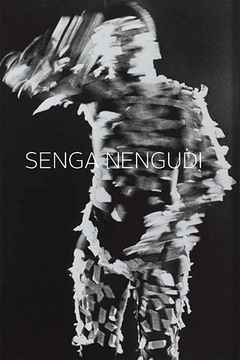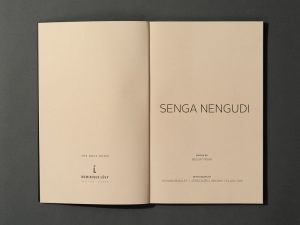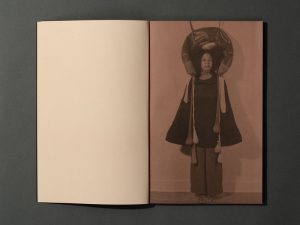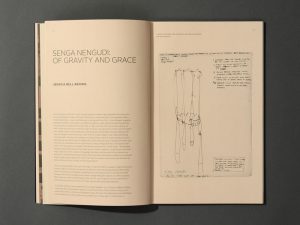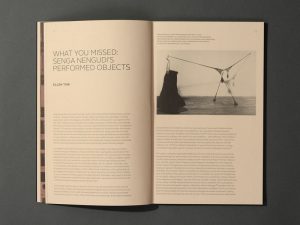2a.
- This work is a series of artworks that are divided on two sides of a room. On one side there is a wide stretched nylon stocking that went continuously from the side wall to the ceiling. On the other side of the room, it is again divided into half by a wall in the middle. On each side, there are web like triangular shaped wire that are in a flipped over position.
- I felt the strong contrast in materiality of the two but other than that, I did not quite get the meaning behind the artwork.
2b.
There were only two medium used in this artwork- nylon stocking and wire. The artist used these materials intentionally because nylon stocking is an every day object, what you can find in many women’s closet. This is a representative of vulnerability and the expendable side of women.
3a.
- Nylon stocking and wire create a strong contrast in material wise, I think they come together really well. The material that the artist chose really have an effect on the context and the content.
- This work is a bout female and how female be in a society, this definitely relate to many of the work in this exhibition because many of the works there are also discussing feminism and female in society.
3b. Nylon stockings are invented in 1938 in the United States. The introduction of nylon in 1939 by chemical company DuPont began a high demand for stockings in the United States with up to 4 million pairs being purchased in one day. Nylon stockings were cheap, durable, and sheer compared to their cotton and silk counterparts.
4a.
- Why the stocking is arranged in such form?
In this series- RSVP, Nengudi was exploring dancing performance and sculpture. She combined sculpture and performance together. Through sets of choreographed actions, sometimes performed in front of a camera or an audience, the artist stretches nylon stockings filled with sand into surreal and distended shapes. In the new work on view here, Nengudi pulls, twists and knots the stockings to create hanging sculptures that suggest shed skins and contours of the human body—their ephemeral nature alluding to life’s impermanence.
- What aspects of social issue is behind the nylon stocking?
This series of works bring up many issues behind them, ephemerality, a woman’s life is in her wallet, this is because how cheap a stocking is and how ordinary stocking is.
- Why are there different color of stockings in Senga Nengudi’s other works?
Segna Nengudi, as African American, has an element of race.
4b. After Nengudi’s most significant work RSVP, she created work like “Now dig this! Art and black 1960-1980” and “Blues of smoke” (2013)
In the work that exhibited at the Whitney Museum is in her most known series of work: RSVP, in this work she focused on found object such as: pantyhose, nylon stocking, sand, and wire. She worked with performance based sculpture. She sometimes work along physically with the performance, or sometimes the performance is recorded.
4c.
- When people walk into the space of this work, people often look at it slowly as it is a big piece and it is divided into three sections. Viewers don’t really talk to one another about the work, people just look at it for around 15 to 30 seconds, and they will leave. People don’t really have a specific emotion on their face too.
- Questions to a museum goer:
- 1. Why did you come here today?
I was planning to come to Chelsea to grab some lunch with a friend, after that I just decided to come here.
- 2. What do you think is the meaning behind the artwork Internal 1?
I dont know. Probably about feminism.
- 3. How do you like this piece?
I like how it looks, nice and clean.
- 4. Do you know the artist – Senga Nengudi before?
No
- 5. Does the material of the work remind you of a story or an event?
Not really.
- I think this kind of detailed research really helped me understand the artist, the work she does, the content of her work, her background which is a really important influence of her work. Normally, I look at the work that I like, I would read the side description of the artwork and take a picture of it. That is pretty much I normally do. But in this research project, I really searched deep into the artist, the work, her life and most importantly, the content of her work. I get to know what is her perspective in art. I think the challenge of this assignment is definitely interviewing the people at the museum, it is hard to start a conversation with a stranger, and the person that you’re asking might not be willing to talk to you. Fortunately, I have done a project from last studio’s project, that I had to interview people at the Washington square park, so I had some experience on this already. But, the person that I interviewed at the Whitney Museum wan’t really friendly, and didn’t provide much information, but the good thing is that she didn’t reject me.
Connection with my research topic
- The artist is talking about identity of women, I am talking about identity of men and women in general. I think the connection between her work and mine is digging deep down into humans’ personalities, identities. In addition, the want to show audience a really strong opinion by oneself.
- Also, material wise, I think we are using similar approach, she used stocking which is a representative of human skin, and I am using a fake mask.
